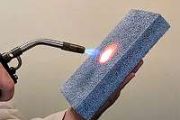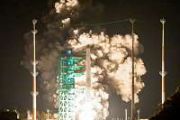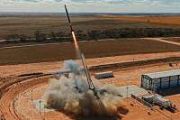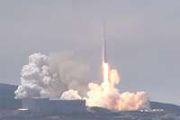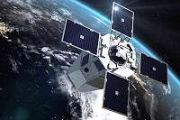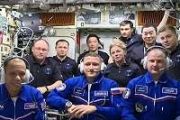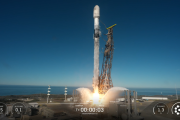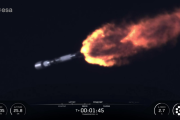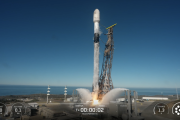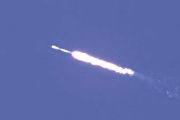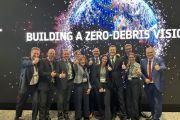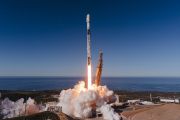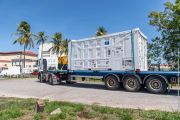
Copernical Team
Unlocking the Secrets of Cosmic Dust with the Webb Telescope
 Cosmic dust does far more than float through space. It's the raw material from which stars, planets and possibly even life emerge. Yet astronomers have long puzzled over where this vast amount of dust comes from and what it's made of.
Dr. Noel Richardson, an associate professor of Physics and Astronomy at Embry-Riddle Aeronautical University, and his students are answering these questions
Cosmic dust does far more than float through space. It's the raw material from which stars, planets and possibly even life emerge. Yet astronomers have long puzzled over where this vast amount of dust comes from and what it's made of.
Dr. Noel Richardson, an associate professor of Physics and Astronomy at Embry-Riddle Aeronautical University, and his students are answering these questions Scientists uncover mechanism that causes formation of planets
 Instead of a tempest in a teapot, imagine the cosmos in a canister. Scientists have performed experiments using nested, spinning cylinders to confirm that an uneven wobble in a ring of electrically conductive fluid like liquid metal or plasma causes particles on the inside of the ring to drift inward. Since revolving rings of plasma also occur around stars and black holes, these new findings imp
Instead of a tempest in a teapot, imagine the cosmos in a canister. Scientists have performed experiments using nested, spinning cylinders to confirm that an uneven wobble in a ring of electrically conductive fluid like liquid metal or plasma causes particles on the inside of the ring to drift inward. Since revolving rings of plasma also occur around stars and black holes, these new findings imp UK hopes to bolster space weather forecasts with Europe's first solar storm monitor
 A new UK-led satellite mission concept aims to strengthen the country's position in space weather observation and forecasting by deploying a suite of homegrown scientific instruments on a low-cost spacecraft in low-Earth orbit.
The proposal was presented Wednesday at the Royal Astronomical Society's National Astronomy Meeting 2025 in Durham.
UK-ODESSI (UK-Orbital pathfinDEr for Space
A new UK-led satellite mission concept aims to strengthen the country's position in space weather observation and forecasting by deploying a suite of homegrown scientific instruments on a low-cost spacecraft in low-Earth orbit.
The proposal was presented Wednesday at the Royal Astronomical Society's National Astronomy Meeting 2025 in Durham.
UK-ODESSI (UK-Orbital pathfinDEr for Space Quantum Secure Space Tech Partnership Launched by Space TS and Synergy Quantum
 In a strategic move to reinforce India's space sovereignty in the quantum era, Space TS and Synergy Quantum have signed a Memorandum of Understanding to co-develop the nation's first indigenous quantum-secure satellite systems and supporting technologies.
This collaboration unites Space TS's expertise in satellite systems engineering with Synergy Quantum's leadership in post-quantum cybers
In a strategic move to reinforce India's space sovereignty in the quantum era, Space TS and Synergy Quantum have signed a Memorandum of Understanding to co-develop the nation's first indigenous quantum-secure satellite systems and supporting technologies.
This collaboration unites Space TS's expertise in satellite systems engineering with Synergy Quantum's leadership in post-quantum cybers Chang'e-6 mission reveals ancient volcanic and magnetic secrets from Moon's farside
 The Moon's near and far sides differ dramatically in terrain, crust, and volcanic history-a mystery that has long perplexed scientists. This disparity is now better understood thanks to China's Chang'e-6 mission, which launched on May 3, 2024, and returned 1,935.3 grams of lunar material from the South Pole-Aitken Basin (SPA) on June 25, 2024. The SPA, a 2,500-kilometer-wide structure, is the ol
The Moon's near and far sides differ dramatically in terrain, crust, and volcanic history-a mystery that has long perplexed scientists. This disparity is now better understood thanks to China's Chang'e-6 mission, which launched on May 3, 2024, and returned 1,935.3 grams of lunar material from the South Pole-Aitken Basin (SPA) on June 25, 2024. The SPA, a 2,500-kilometer-wide structure, is the ol The Mars mission that could prep for a human landing
 If we're to land humans on Mars in the coming decades, we'll have to know what challenges await them when they get there.
Enter M-MATISSE, a potential precursor to a crewed mission to the Red Planet which could use UK instrumentation being promoted at the Royal Astronomical Society's National Astronomy Meeting 2025 in Durham to revolutionise our understanding of space weather on Mars.
If we're to land humans on Mars in the coming decades, we'll have to know what challenges await them when they get there.
Enter M-MATISSE, a potential precursor to a crewed mission to the Red Planet which could use UK instrumentation being promoted at the Royal Astronomical Society's National Astronomy Meeting 2025 in Durham to revolutionise our understanding of space weather on Mars. Newly discovered interstellar object 'may be oldest comet ever seen'
 A mystery interstellar object discovered last week is likely to be the oldest comet ever seen - possibly predating our solar system by more than three billion years, researchers say.
The "water ice-rich" visitor, named 3I/ATLAS, is only the third known object from beyond our solar system ever spotted in our cosmic neighbourhood and the first to reach us from a completely different region o
A mystery interstellar object discovered last week is likely to be the oldest comet ever seen - possibly predating our solar system by more than three billion years, researchers say.
The "water ice-rich" visitor, named 3I/ATLAS, is only the third known object from beyond our solar system ever spotted in our cosmic neighbourhood and the first to reach us from a completely different region o Six Chinese universities to launch new low altitude space major this fall
 In a concerted push to support China's rapidly expanding low-altitude space sector, six leading universities will introduce an undergraduate major in the field this fall. The program, approved in April by the Ministry of Education, is part of a national strategy to cultivate professionals for an industry projected to surpass 1.5 trillion yuan ($207 billion) in value by the end of 2025.
The
In a concerted push to support China's rapidly expanding low-altitude space sector, six leading universities will introduce an undergraduate major in the field this fall. The program, approved in April by the Ministry of Education, is part of a national strategy to cultivate professionals for an industry projected to surpass 1.5 trillion yuan ($207 billion) in value by the end of 2025.
The New Martian rock reveals clues about volcanic history on the Red Planet
 In a major breakthrough, scientists from Chengdu University of Technology have analyzed a newly discovered Martian meteorite that could help explain how volcanoes once shaped Mars. The meteorite, named Northwest Africa (NWA) 16254, is a rare type known as a gabbroic shergottite and offers a unique glimpse into the planet's deep interior and ancient volcanic systems.
The research, published
In a major breakthrough, scientists from Chengdu University of Technology have analyzed a newly discovered Martian meteorite that could help explain how volcanoes once shaped Mars. The meteorite, named Northwest Africa (NWA) 16254, is a rare type known as a gabbroic shergottite and offers a unique glimpse into the planet's deep interior and ancient volcanic systems.
The research, published Space Forge and Intuitive Machines team up to boost US orbital chip production
 Space Forge Inc., a leader in orbital materials engineering, has entered into a strategic partnership with Intuitive Machines to deploy its semiconductor manufacturing payload aboard the Zephyr orbital return vehicle. The collaboration forms part of Intuitive Machines' Earth Reentry Program and is backed by the Texas Space Commission.
This joint effort aims to rapidly advance the U.S. dome
Space Forge Inc., a leader in orbital materials engineering, has entered into a strategic partnership with Intuitive Machines to deploy its semiconductor manufacturing payload aboard the Zephyr orbital return vehicle. The collaboration forms part of Intuitive Machines' Earth Reentry Program and is backed by the Texas Space Commission.
This joint effort aims to rapidly advance the U.S. dome 



